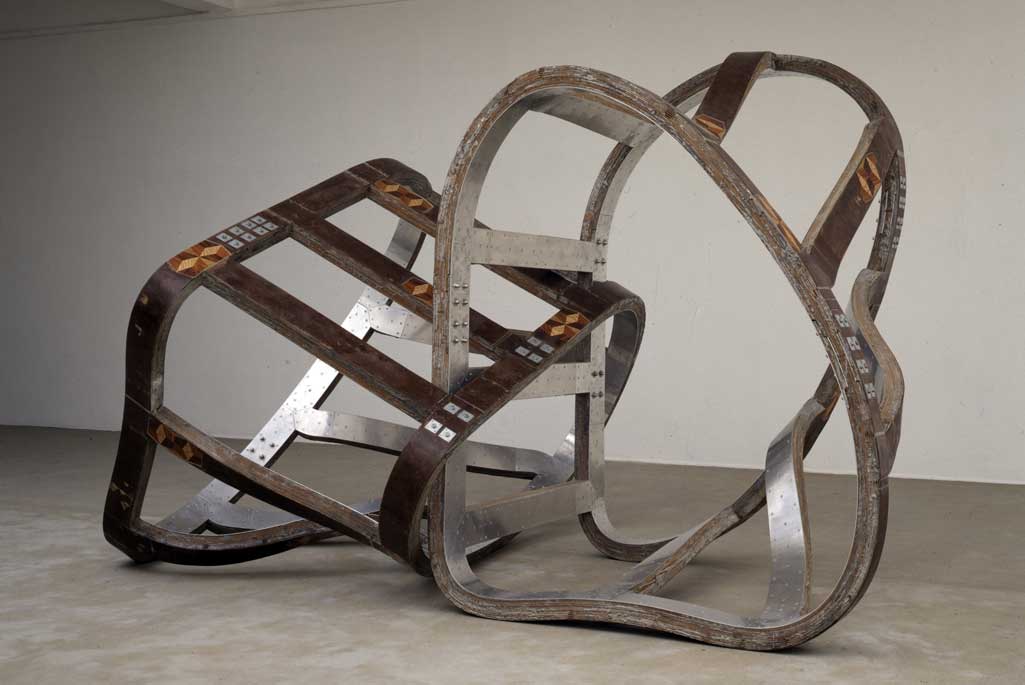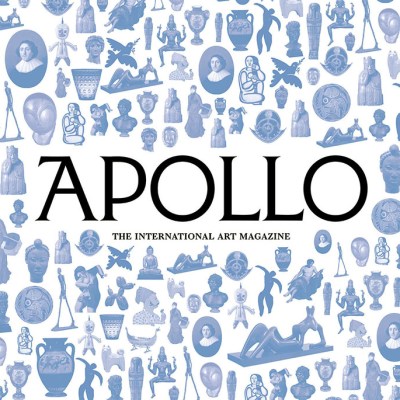The curves in Richard Deacon’s monumental sinewy sculptures, although clearly bearing the marks of engineering, also have a lightness and looseness to them, like gestures in three dimensions. Even as they tower above you it is not difficult to see how they would have begun life, as outlines traced on paper.
Deacon’s drawing series ‘It’s Orpheus When There’s Singing’ (1978–9) is currently on display as part of the artist’s retrospective at Tate Britain. It features graphite ruled lines layered with arcing abstractions in pastels. Previously Deacon had used drawing to plan the fabrication of his sculptures, sketching diagrams to communicate specifications, but the concentrated period in which he produced the Orpheus series was a breakthrough. Drawing as a process – a language in itself – remains crucial to his work as a sculptor.
At the Drawing Room in Bermondsey, Deacon has curated an exhibition which – while certainly a substantial collection spanning 105 years – is pointedly not a ‘universal’ survey of abstract drawing. Deacon’s highly subjective selection includes more than 30 artists, and correlates directly with interests apparent in his own work.
Cross for Me, Kiss for You CCCXVII 03.01.00 (2000), Bob Law. © The Estate of Bob Law. Courtesy of Richard Saltoun Gallery, London

Zoe Pilger interviewed Richard Deacon in the February issue of Apollo…
Many of the artists represented are not known primarily for their drawing – Anish Kapoor, Eva Hesse and Jackson Pollock to name a few – and drawing as a discipline is stretched well beyond the constraints of pencil on paper. The absence of figurative subjects serves to draw attention more keenly to the materials and artistic approaches, and particularly to the qualities of the mark-making. The crispness of Tomma Abts’ coloured pencils contrast with Bob Law’s scratchy and smudged crosses, as does the delicacy of Richard Wright’s gold leaf and the thump of Richard Serra’s paint stick.
Often it is possible to see the artists thinking through the action of drawing, even to imagine the hand moving across the surface of the paper, or in the case of Gordon Matta-Clark dragging a blade through a thick wedge of it. There are other works in which performative action is even more apparent – John Latham’s 1 Second Drawing employs a spray gun. Another strand divorces the artist from the mark-making process completely, as in Frederick Hammersley’s computer-generated drawings.
Deacon has deftly brought together an expansive body of works that demonstrate the versatility and urgency of drawing as a medium. In a sense his curation mirrors his making process, in that he has traced a line through the history of his subject, while at the same time making connections along many divergent narrative arcs. Deacon’s teasing, testing approach results in a rich experience for the viewer, who is asked to appreciate both the monumental whole, and the fine detail of craftsmanship.
‘Abstract Drawing’ is at the Drawing Room, London, until 19 April 2014.
Related Articles:
Zoe Pilger interviews Richard Deacon for the February issue of Apollo
First Look: ‘Drawing Time, Reading Time’ at the Drawing Center, New York









